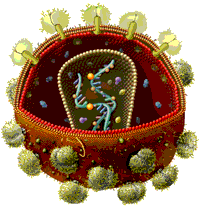Museum, University of Nebraska State
Date of this Version
1-2019
Document Type
Article
Citation
Published in Research in Science Education (2019)
doi 10.1007/s11165-018-9814-8
Abstract
Equitable learning opportunities are critical to the goals of science education. However, major curriculum standards are vague on how to achieve equity goals, and educators must often develop their own resources and strategies to achieve equity goals. This study examines how educators used a comic book series designed to interest youth in virology as a way to make science more broadly appealing to their diverse students. We begin with the notion of Pedagogical Design Capacity, which describes a dynamic relationship between teachers and their tools and the ability for teachers to perceive and leverage affordances of artifacts as tools in their curriculum design. In a qualitative analysis of 18 interviews with educators, survey responses, instructional artifacts, and classroom observations, we describe the potential that educators saw in the comics and the strategies they used to take advantage of that potential to promote equitable science teaching. Notably, we observed how the comics enabled educators to incorporate multiple literacies and disciplinary lenses into their lessons, thereby expanding traditional views of science literacy. We documented the range of techniques by which they used comics and fictional narratives to support specific scientific practices, such as modeling. We also observed challenges that participants encountered in using comics, which included overcoming their own and their students’ attitudes and beliefs regarding the role of informal reading materials in science education.
Included in
Immunology and Infectious Disease Commons, Instructional Media Design Commons, Medical Education Commons, Science and Mathematics Education Commons, Translational Medical Research Commons, Virus Diseases Commons


Comments
Copyright © 2019 Springer Nature B.V. Used by permission.